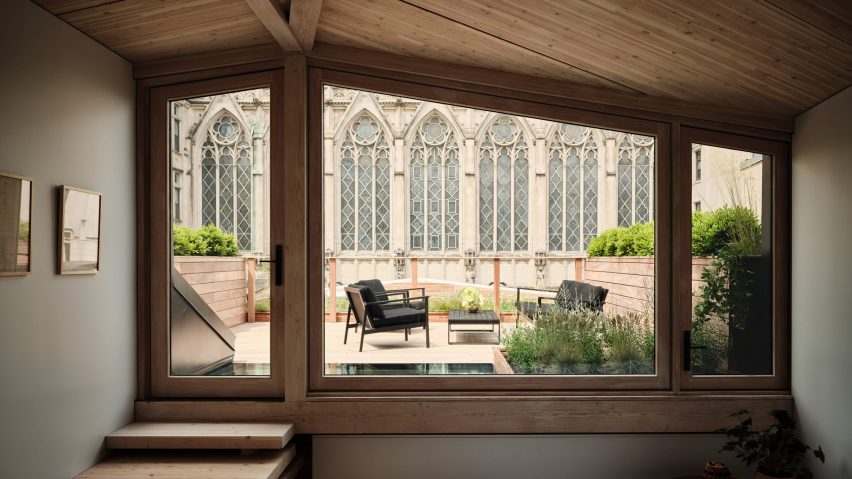
Schiller Projects turns former carriage house into mass-timber residence
New York-based studio Schiller Projects has converted a former Brooklyn carriage house into a single-family residence using mass-timber construction and re-purposed materials.
According to Schiller Projects, it is the first single-family residence in New York City to be built using mass timber construction methods.
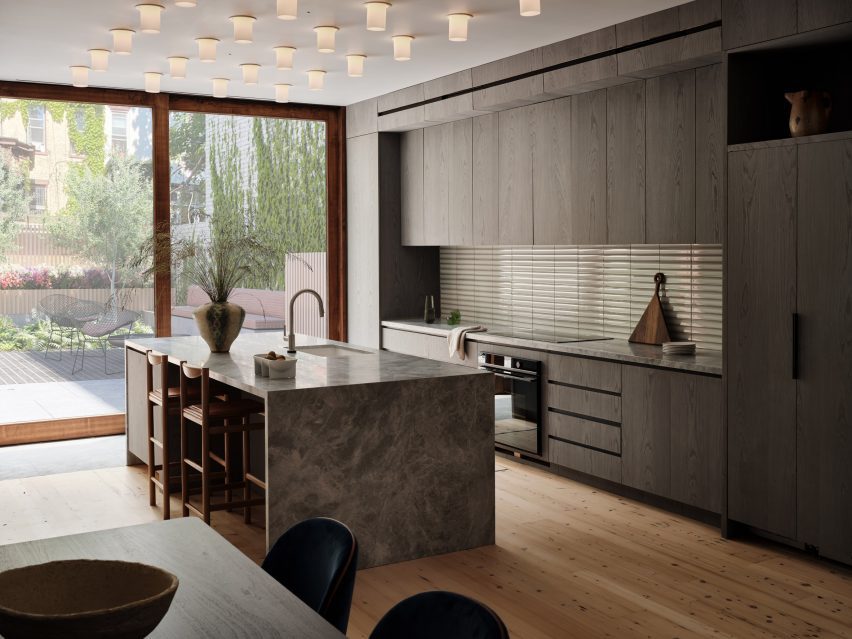
"In response to the dual environmental and housing crises, our studio set ourselves the task of dismantling and recycling the existing, but damaged, components from the original structure, dating to 1880, then reforming and enlarging the existing building using new components that could themselves be recycled or reworked in 100 years without loss or degradation," said the team.
Located in the Clinton Hill neighbourhood, the red brick facade of the house was restored to harken back to its 1873 origins, with arched windows and central garage doors painted in black. The brick facades conceal the remodelled interior of the home, with a completely new floor for the primary suite at the top of the building.
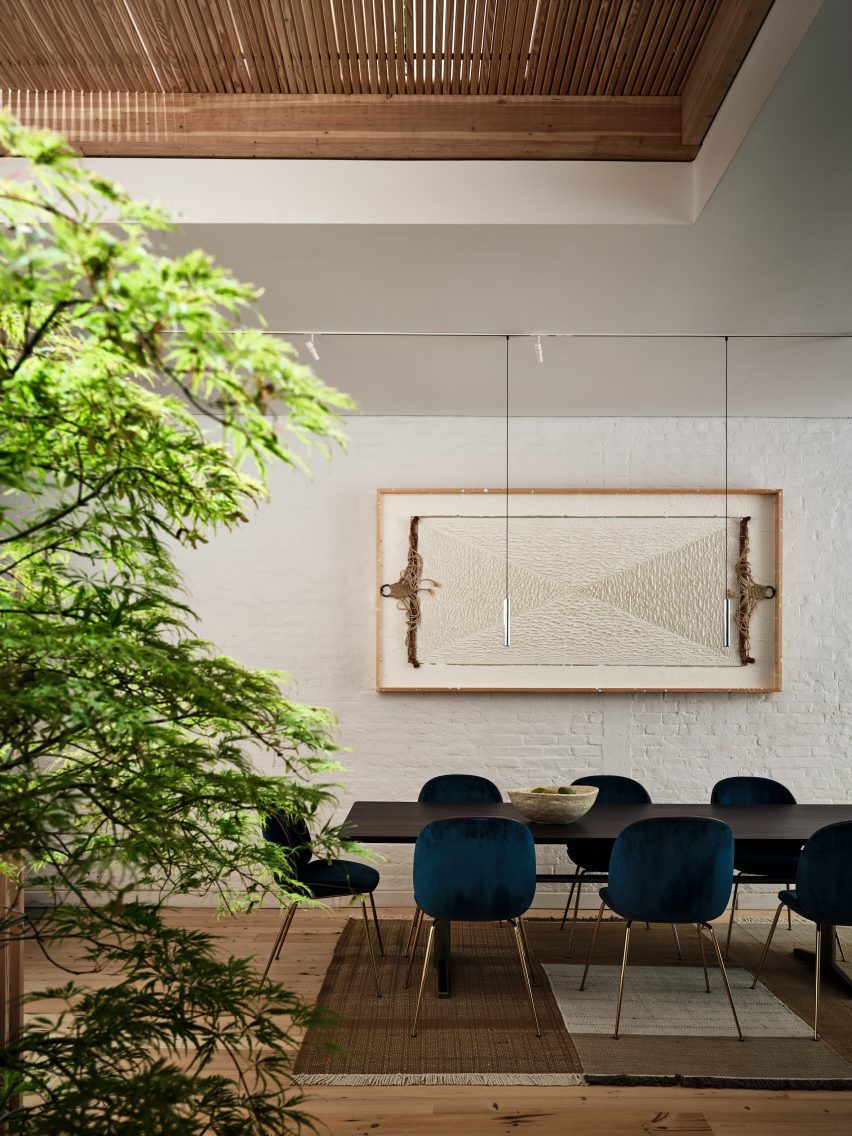
At its back, it faces a Gothic Revival cathedral, which can be seen through the windows on each of the house's three floors.
Inhabitants enter past the garage at the front of the property and enter into a first-floor kitchen and dining space that looks out over a backyard.
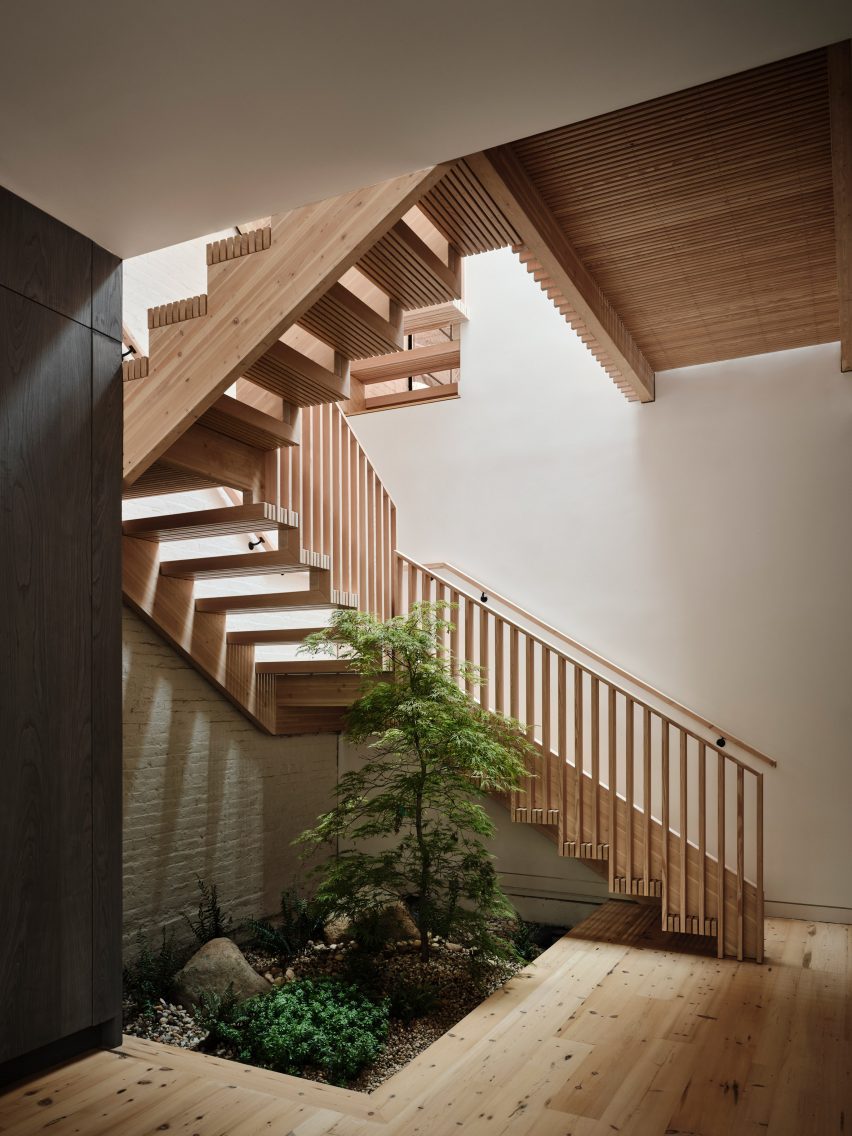
Inside, a three-storey Douglas Fir glued-laminated timber (glulam) staircase sits to the side, with an old coal ash pit converted into a planting bed installed at the base.
A skylight and second-floor bridge allow light to filter down through the centre of the stairs and its slatted wooden treads and railings.
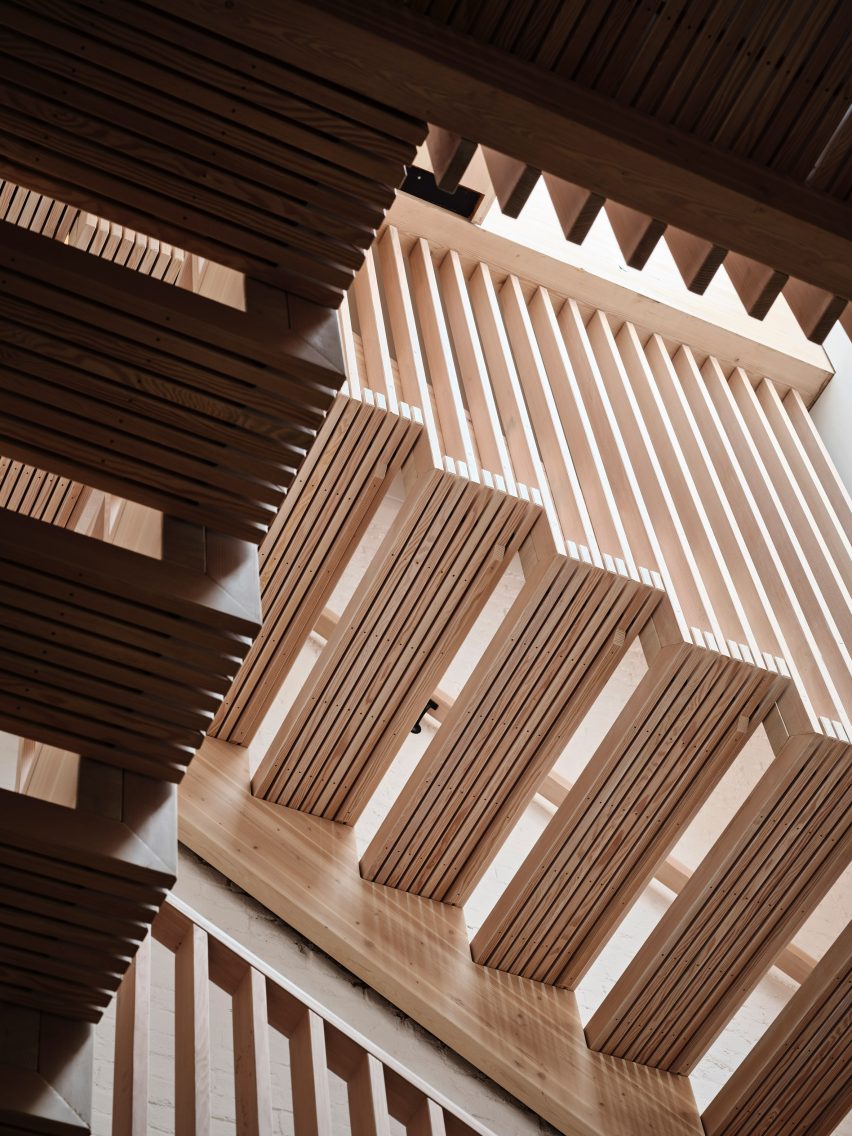
"The majority of the dowels and screws hidden within the slatted members are all wood," said the studio.
"The only metal screws and bolts are installed beneath concealed wooden covers that slip off. The whole system can be tightened, loosened, or entirely dismantled without waste or heavy tools."
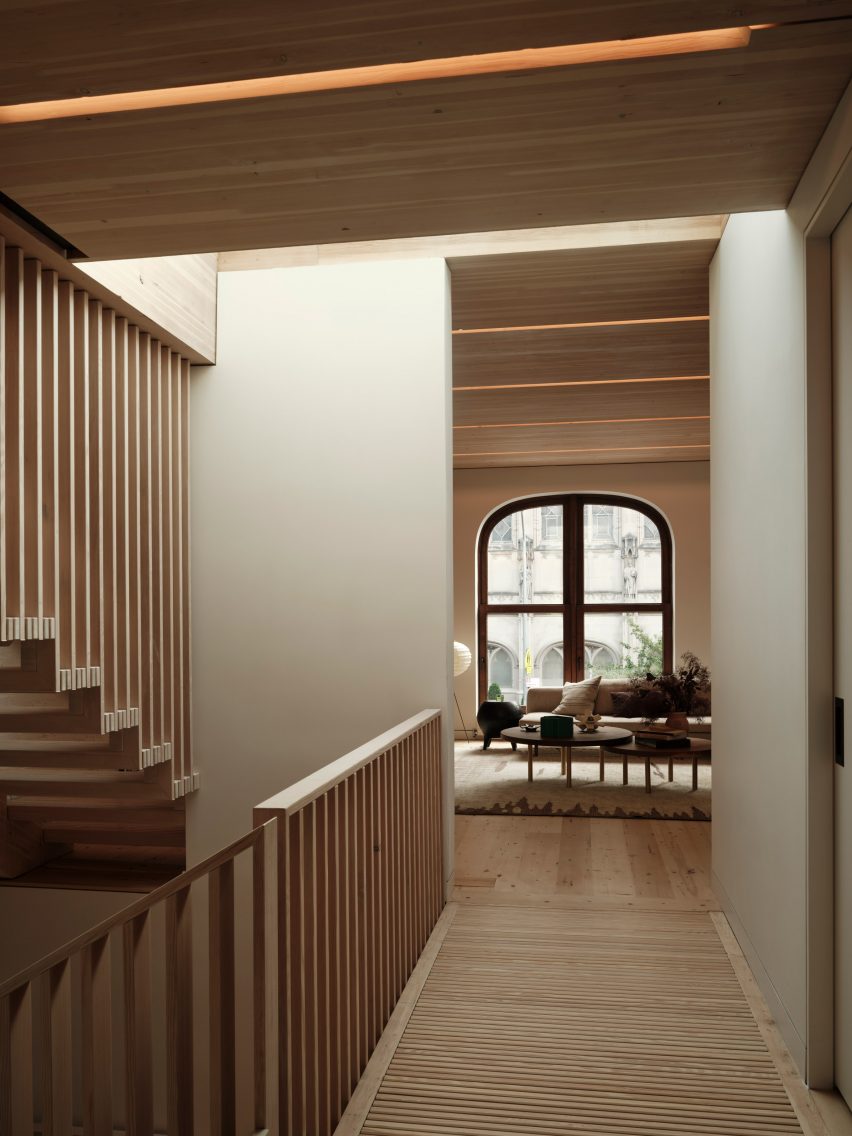
The staircase was fabricated off-site and installed "in a matter of days".
On the second floor is a living room, laundry room and two bedrooms with adjoining full bathrooms.
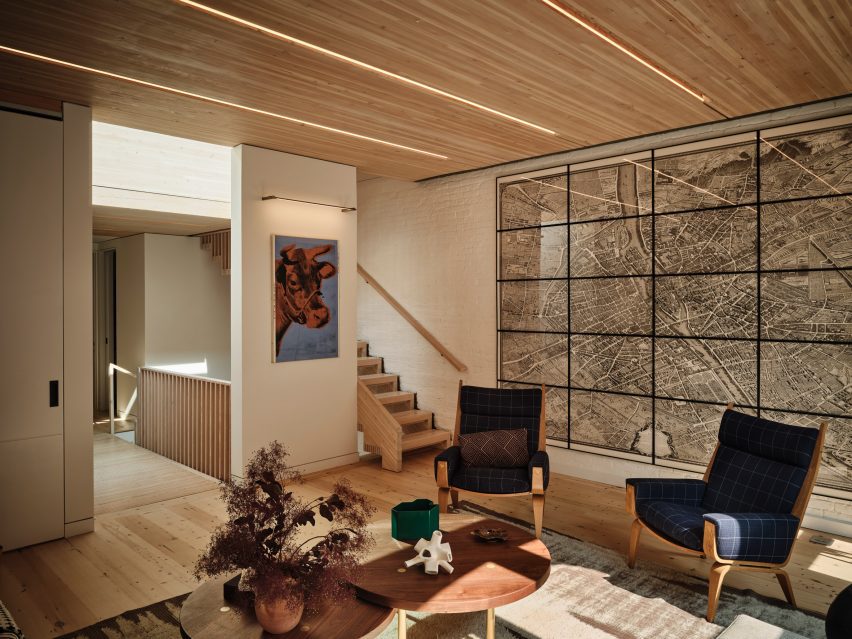
The primary suite was placed on the third floor and opens onto a roof terrace through a large, asymmetrical picture window and glass door.
An interior seating pit was installed in front of the windows, while the door leads out over the staircase's skylight and onto a patio.
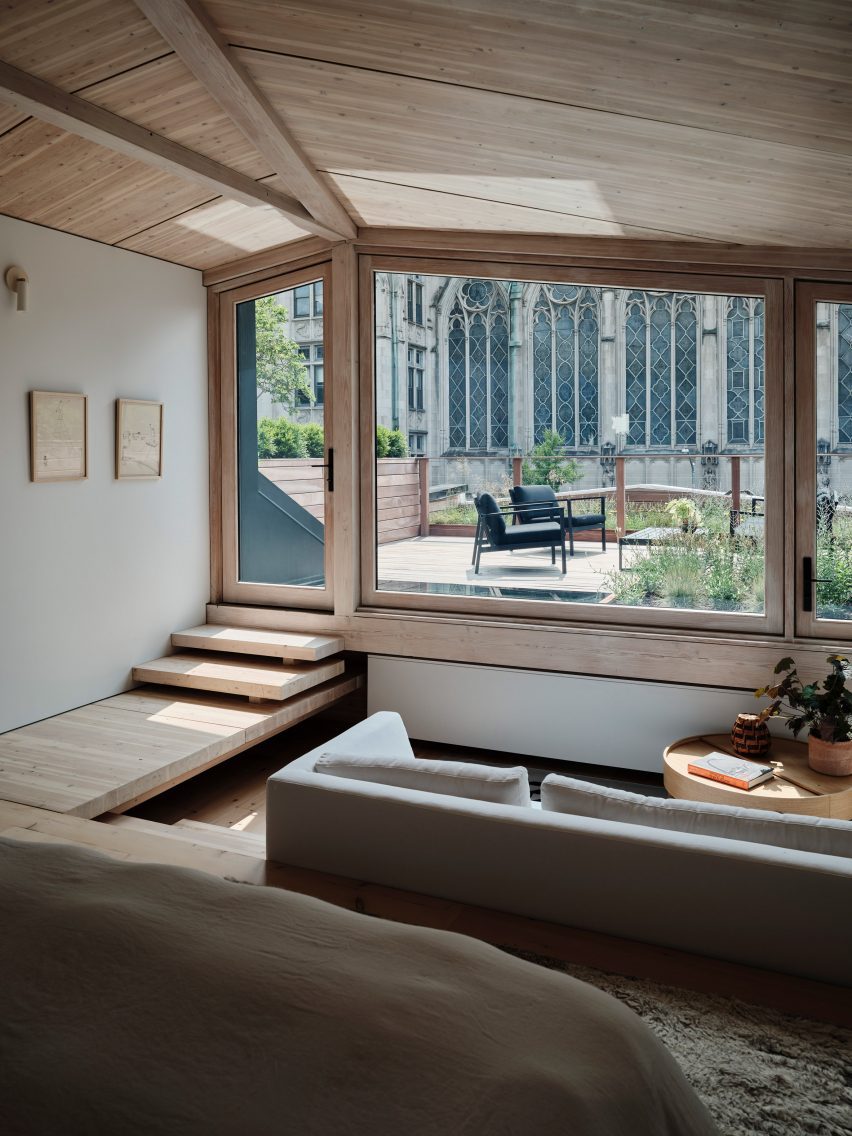
The studio used a variety of re-purposed materials in the creation of the house.
Excess timber panels were sourced from a New England dormitory project undergoing construction, while the wooden floors were made of recycled hardwood from the original structural beams.
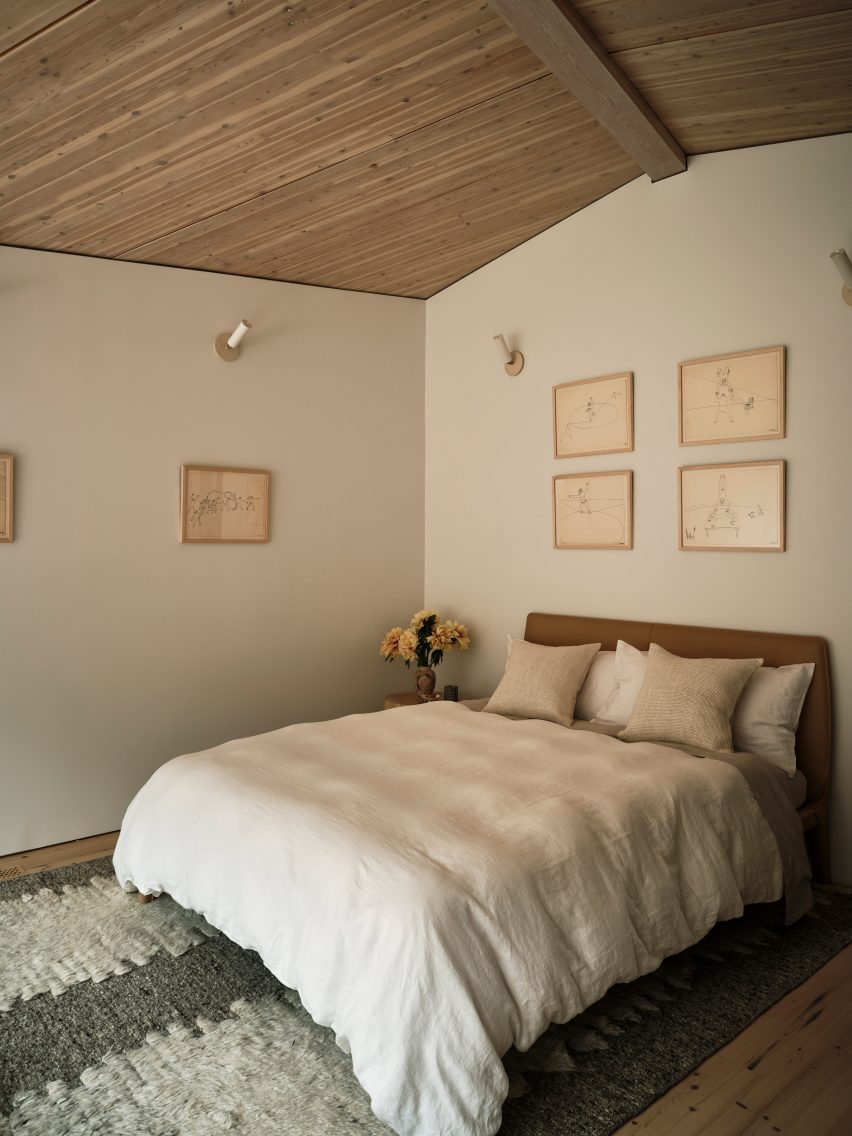
After the studio addressed the water, fire damage and leftover nails from the beams, they were sized down to floorboards by local millwork shop Tri-Lox.
Custom wood windows installed throughout the project were also made by a local fabricator located in the Navy Yard.
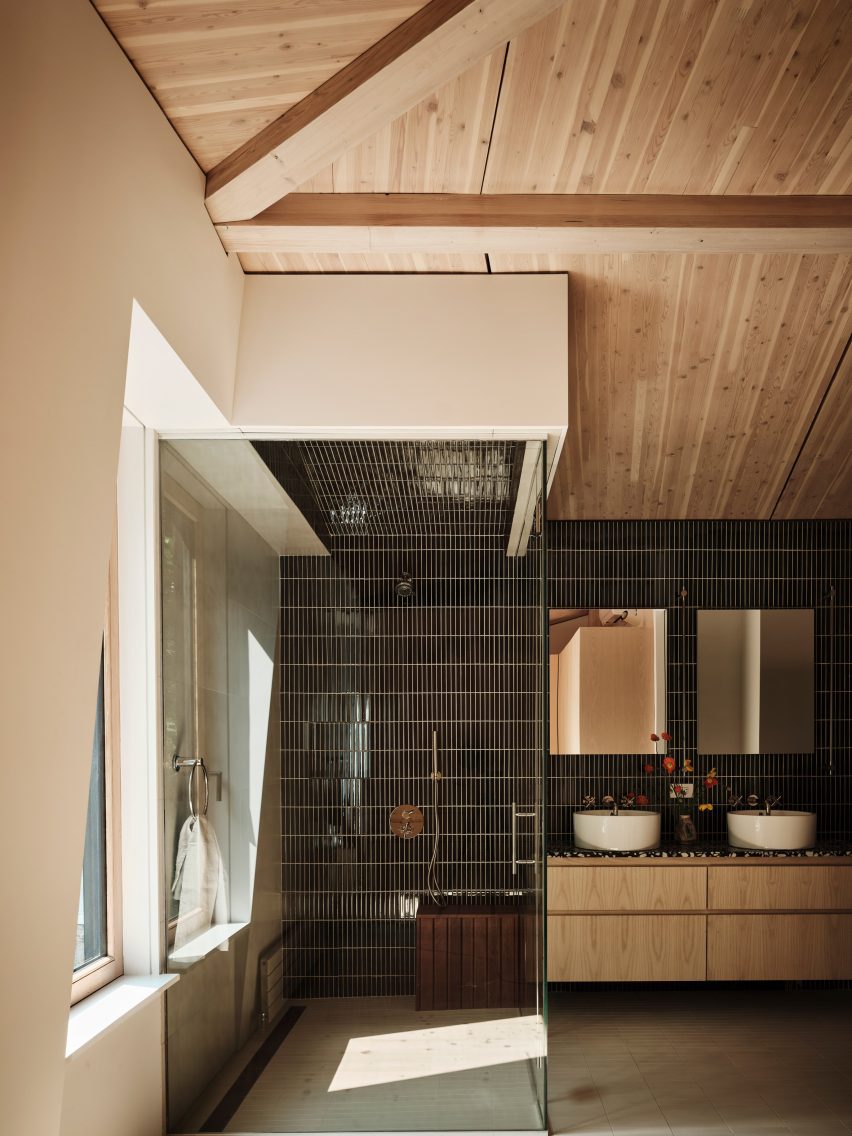
The studio also collaborated with New York-based company Stickbulb on the patent-pending Electrified Laminated Timber (ELT) lighting system.
"The design carves light-reflective coves into the gaps between timber elements," said the studio.
"Features for the lighting system were milled into the wooden panels at the factory before they were shipped to site, allowing for a system of custom-designed lighting elements to flush-fit into place without the need for fasteners."
According to the team, the method has the potential to further reduce the embodied carbon of a project by eliminating unnecessary metal enclosures and other installation components.
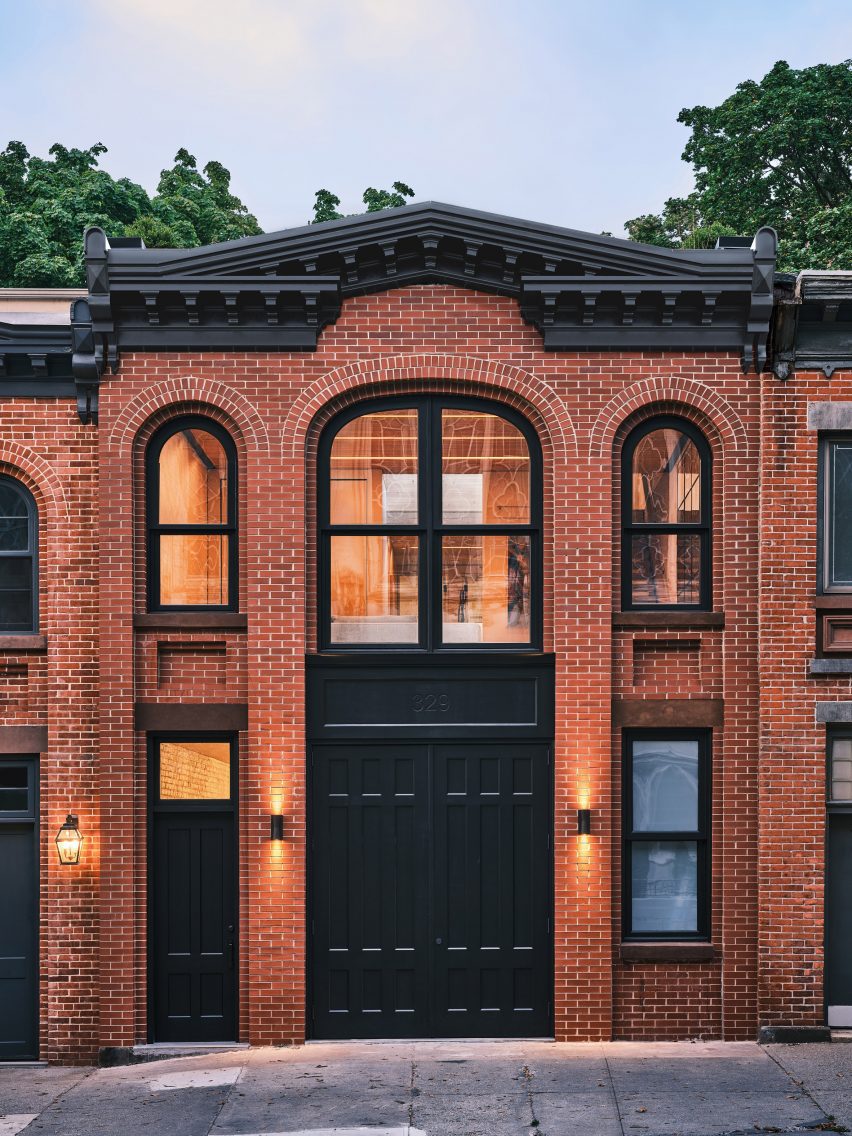
Tones of grey were used throughout the interior, found in cabinetry clad in recycled veneer, a painted brick wall that runs along the dining wall and stairwell, and in the primary bath, which was wrapped in black tile.
Studio founder Aaron Schiller designed the house for himself and his family.
"The mass timber construction methodology we designed made it possible for us to create a beautiful, ecologically friendly home in a fraction of the construction time utilizing traditional methods despite the difficulties of building in a dense urban center," said the studio.
"The building exemplifies how modern methodologies can be used to re-purpose and enhance existing historic structures."
Schiller Projects was founded in 2011 by Aaron Schiller. Previous work includes a Massachusetts island home embedded in a hillside.
New York City recently announced an assistance program for design teams interested in mass-timber construction, while local studio Mesh Architectures completed the city's "largest mass-timber building" in Park Slope.
The photography is by Frank Frances.